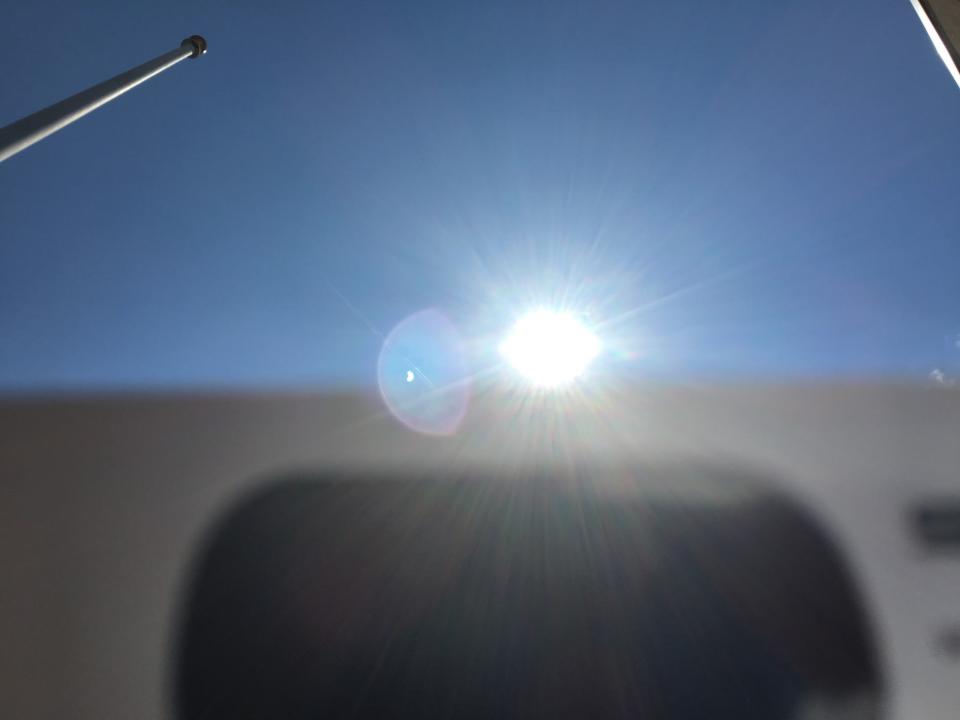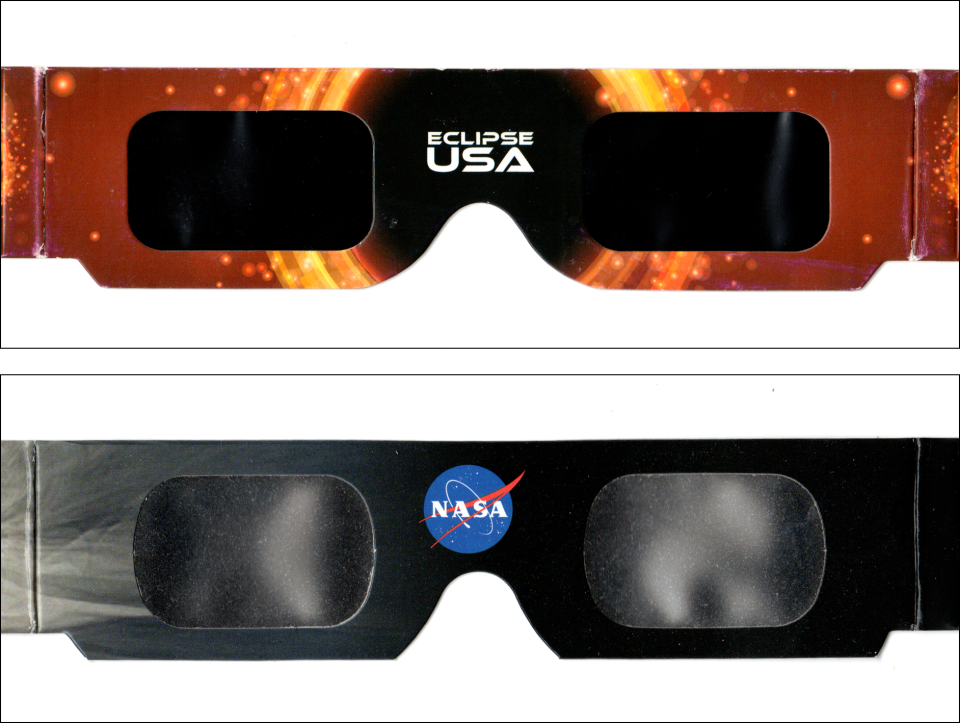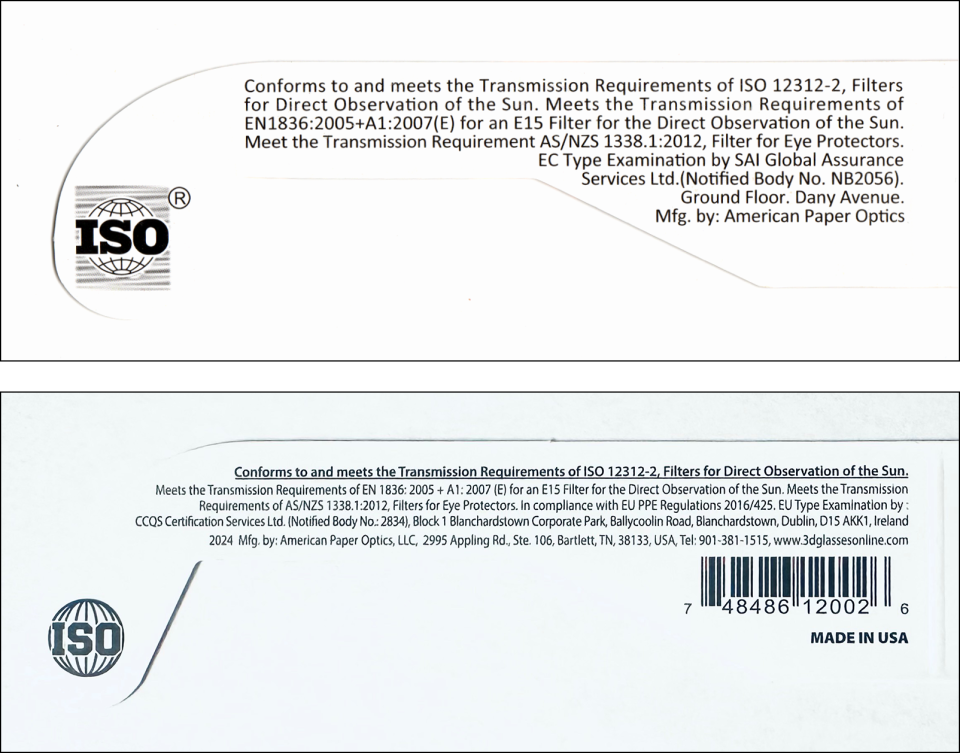Fake eclipse glasses are flooding online stores. Is yours safe? How to test before the April solar eclipse
Good news: There's a solar eclipse coming! Bad news: Looking at it can fry your eyes and immediately cause serious, lasting damage. Good news: You can safely look at it with a pair of eclipse glasses.
Really bad news: You may not be able to trust the pair you bought online.
The American Astronomical Society previously warned people to make sure their glasses were ISO-certified but said they hadn't seen any evidence that scammers were selling unsafe copies. Last week, they announced that's no longer the case and the pair you got with a great deal online might let the sun burn out your retinas.
"In recent days it has become clear that one or more unidentified factories in China are now producing counterfeit eclipse glasses printed with the name and address of a different Chinese factory," the AAS said in a release.
Some counterfeit glasses look nearly indistinguishable from the originals, with identical artwork and logos, and appear to be safe, the AAS said, but others that look legitimate are fakes, "no darker than ordinary sunglasses," and extremely dangerous.
Do you need special glasses to view a solar eclipse?

DO NOT LOOK DIRECTLY AT THE SUN DURING A SOLAR ECLIPSE.
Don't look directly at the sun anytime, but during a total or partial eclipse it's easy to let your guard down. The only time it's safe is a very brief time during a totality when the sun is completely blocked by the moon, and there is nowhere in Florida that will be in the path of totality during the April 2024 eclipse.
Gazing at the sun without protective eyewear can cause serious damage such as blurred or altered vision and can destroy parts of the retina.
Solar eclipse is Monday, April 8, 2024: Is there school that day in Florida, excused absence?
How to spot fake eclipse glasses

The first thing to check for is the ISO certification.
Safe eclipse glasses (and filters, for cameras and telescopes) are at least 1,000 times darker than regular sunglasses and have been given an ISO 12312-2 certification. ISO stands for "International Organization for Standardization." But scammers may put that on their counterfeit product whether it's true or not.
Avoid any eclipse glasses that say they are NASA-approved. "NASA does not approve any particular brand of solar viewers," the agency says on its website.

Look for misspellings, incomplete addresses and other sloppy printing mistakes. ISO-certified glasses must have both the company's name and address.
The safest way is to buy your glasses directly from a vetted vendor. The AAS has a list at eclipse.aas.org/eye-safety/viewers-filters. But don't assume that glasses from the names on the list are legit if you buy them from an online marketplace such as Amazon.
"We recommend not buying eclipse glasses from random sellers in online marketplaces," the AAS said in the release, "even if they claim to get their products from a supplier on our list or to be approved by the AAS or NASA."
How to test eclipse glasses for safety
“There’s no way to tell just by looking at them whether eclipse glasses are genuinely safe,” said Rick Fienberg, Project Manager of the AAS Solar Eclipse Task Force, “but it’s easy to tell if they are not safe.”
Put your glasses on indoors and look around. You shouldn't be able to see anything at all through them "except perhaps very bright lights, which should appear very faint through the glasses," the AAS said. If you can see anything else at all, your glasses are not safe.
Next, take them outside on a sunny day, put them on and look around. "You still shouldn’t see anything through them," the AAS said, "except perhaps the Sun’s reflection off a shiny surface or a puddle, which again should appear very faint."
If you glance at the sun after that, which the AAS advises not to do for more than a second, the sun should appear as a sharp-edged disc that's comfortably bright.
If your glasses seem safe but you aren't completely certain, get another pair or use these sparingly and only in bursts of two to three seconds every five minutes or so. Do not use glasses, even legit ones, that have scratches on them.
“Staring at a partial solar eclipse for more than a few seconds at a time, even through perfectly safe solar viewers, isn’t much fun anyway,” Fienberg said. “It’s almost impossible to detect the Moon’s motion across the Sun in real time except with magnification, and you must never look through magnifying optics while wearing eclipse glasses.”
Where can I get aas.org eclipse glasses?
There are more than 50 authorized dealers listed on the AAS site, including large retail chain stores including Walmart, Lowes and Staples. But if you buy from them do so in person. The chains may use different suppliers for online sales, the AAS said.
Free glasses are available while supplies last at several libraries in Florida but call first to see if they have any left.
Popular prescription glasses retailer Warby Parker will be handing out free eclipse glasses at any of its locations starting April 1, maximum two per household, while supplies last. You can get one from participating Sonic Drive-In locations. with the purchase of a new Blackout Slush Float.
Other ways to watch the eclipse
The safest way to look at the eclipse is not to look up at all.
It's easy to make a pinhole projector that will cast the image of the eclipse onto something like a piece of cardboard. The AAS has a guide to set one up.
Any household object with little holes in such as a colander, a slotted spoon or even a Ritz cracker held over a white sheet of paper. The image of the solar eclipse will filter through the tiny holes.
Solar eclipse events in Florida: List of festivals, planetarium celebrations in April 2024
When is the solar eclipse?
The total eclipse will hit the coast of Mexico on April 8, 2024, around 11:07 a.m. PDT and leave the continental North America at 5:16 NDT. The partial eclipse will begin first as the edge of the moon becomes visible, and then about an hour and 20 minutes later the totality will begin and last for three or four minutes before the sun begins to appear again.
Florida residents should start to see the eclipse beginning around 1:35 p.m. EDT, with the midpoint at 2:55.
Depending on where you are in Florida, anywhere from just over half of the sun to over 3/4 of it will be obscured by the moon from our angle. The farther northwest you go, the more of an eclipse you'll see. Here's when to watch, based on your location.
This article originally appeared on The Daytona Beach News-Journal: 2024 solar eclipse: Counterfeit eclipse glasses online. How to tell

